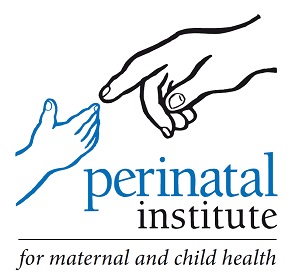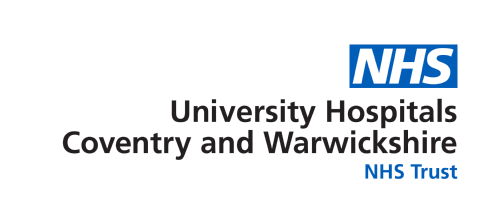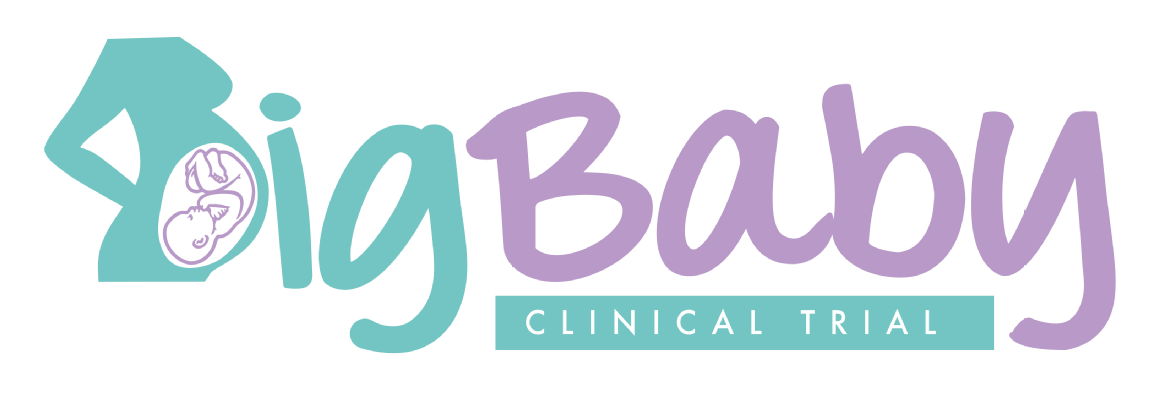About The Trial
Please note: The Big Baby Trial is now closed to recruitment as of 25 November 2022.
Who is running the trial?
The trial is being led by a partnership between University of Warwick, University Hospitals Coventry and Warwickshire (UHCW) NHS Trust and the Perinatal Institute.
What is the purpose of the trial?
The purpose of this trial is to find out if ‘inducing’ (starting) labour earlier than usual, at 38 weeks, makes it less likely that ‘shoulder dystocia’ will happen in women whose babies appear to be bigger than expected (over the 90th centile on the growth chart).
Women who are told they may have a big baby following their antenatal ultrasound scan will not necessarily have a big baby by the time their baby is delivered.
In most cases, women with big babies have a normal labour and birth and there are no concerns. However, there is an increased chance that the birth may be more difficult, which could result in shoulder dystocia. Shoulder dystocia occurs in 1 in 150 of all vaginal deliveries. We know that shoulder dystocia occurs more often in bigger babies but there is uncertainty in how often this actually occurs. We estimate that for big babies shoulder dystocia could occur in up to 1 in 25 vaginal deliveries. If shoulder dystocia occurs the midwives and doctors will use different manoeuvres to help to free the baby’s shoulders, which usually leads to a successful delivery.
Most babies who experience shoulder dystocia will be fine with no complications. But in around 1 in 10 cases of shoulder dystocia, there is stretching of the nerves in the baby’s neck (brachial plexus injury). This can cause loss of movement in the baby’s arm, which in most cases is temporary but in 1 in 10 of those babies the loss of movement can be permanent. In some cases the baby may have a broken collar bone but this heals quickly and easily in babies.
We currently do not know the best way to deliver bigger babies. It may be that starting labour earlier, when babies are smaller, means that shoulder dystocia is less likely to happen. This issue has been identified as an important unanswered question for NHS maternity units. The results of this trial will help women, midwives and obstetricians decide on the best way to deliver big babies.
What will happen if I agree to take part?
You will meet with a member of our research team at the maternity unit who will explain the trial. You are welcome to bring your partner, family member or friend to this meeting. We will ask you about your medical history, any previous pregnancies, and your current pregnancy. We will also review your ultrasound scan results. You can ask our team member any questions you may have. If you are eligible and would like to take part, we will ask you to sign a consent form.
After you have signed the consent form, we will ask you to fill in questionnaires about your health, well-being and quality of life. You will be randomly selected to either have your labour induced at around 38 weeks (the intervention group) or to continue as normal (the usual care group).
If you are selected to have your labour induced, your midwife or obstetrician will organise a time and date for your labour to be started (induction) and they will explain how and when this will happen.
If you are in the usual care group, you will wait for your labour to start naturally and will attend your usual antenatal appointments.
If at any point your obstetrician or midwife feels that a different plan needs to be made for your birth they will discuss this with you. If you no longer feel happy about the birth options you have as part of the trial and would like to discuss other options, you can discuss these with your obstetrician or midwife. If your birth is different to the one you were allocated, you can still continue to be part of the trial.
If you agree to take part we will collect information from your hospital records about the birth of your baby and about your and your baby’s health during the time you are in hospital. We will contact you two and six months after your baby is born and ask you to fill in questionnaires about your and your baby’s health and wellbeing. Please see page 6 of this information sheet for more information about the data we will collect.
The link below details how health researchers use information collected from research.
How health researchers use information from participants.Link opens in a new window
What if I do not want to join the trial?
All women in the trial will receive the same care that they would have received if the trial was not happening. Even if you do not want to join the trial in full, you can still take part in the research. (This is known as the ‘cohort study’). If you agree to join the cohort study we would like to collect information about your birth to help doctors and midwives make decisions about the best way to deliver big babies in the future. If you are happy for us to collect information about your birth we will ask you to sign a consent form.
Some women with big babies may decide that they would like their labour to be induced or that they would like to wait for labour to start naturally. If you are sure that you want an induction or would like to wait for labour to start naturally please discuss this with your midwife and obstetrician.
Some women will decide that they would like to have a Caesarean section to deliver their baby. If you would like to have a Caesarean section you will have an opportunity to discuss this with your midwife and obstetrician. If you would like to deliver your baby by Caesarean section we would like to find out information on your birth and also to find out about the health of you and your baby after the birth. If you would be happy for us to collect this information we will ask you to sign a consent form. We will also ask you to fill in questionnaires that will include information about your and your baby’s health, well-being and quality of life. We will ask you to fill in a questionnaire when you first agree to take part and again two and six months after your baby is born. If you tell us your baby has had important health problems over this time, we will collect information about these from their hospital and GP records. This will help us to better understand and compare the risks and benefits of a vaginal birth or Caesarean section in women with bigger babies.
Please also see the Perinatal Institute's website: Perinatal Institute: Home




